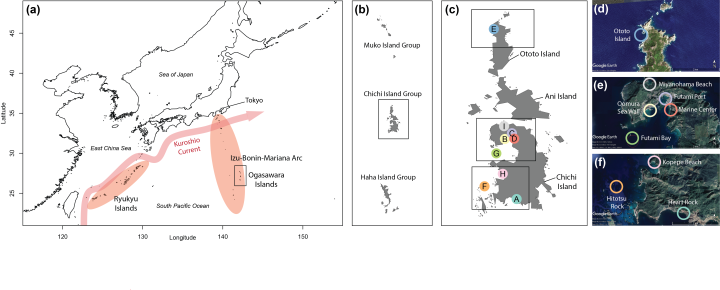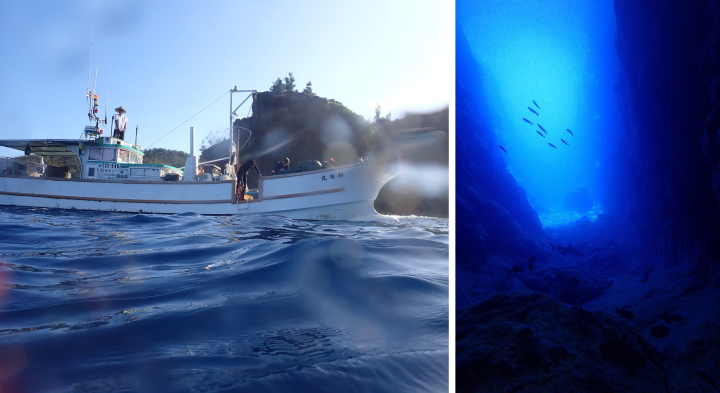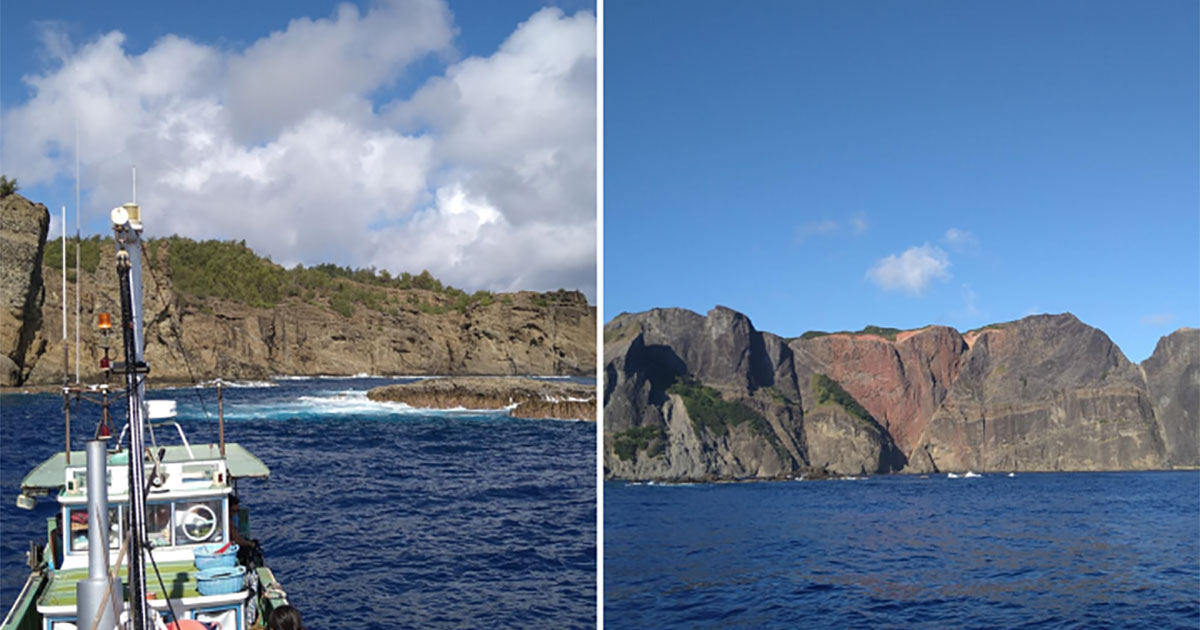A thousand kilometers south of Tokyo, far into the largest ocean on Earth, lies a chain of small, volcanic islands—the Ogasawara Islands. Nature has been able to develop on its own terms here, far from both humans and the warm Kuroshio current, which acts like a shuttle, moving marine species from Taiwan, over the Ryukyu Islands, and up the Pacific coast of mainland Japan. With upwards of 70 % of trees and many animal species being endemic to the archipelago, the islands have been dubbed ‘the Galápagos of the East’, as they are valuable as both a biodiversity hotspot and a cradle of scientific discovery. For that reason, they were designated a UNESCO Natural World Heritage site in 2011.
Though nature here remains largely undisturbed from direct human interference, it’s vulnerable to global threats to biodiversity posed by climate change. The geographic isolation is both a blessing and a curse, as it is difficult to regularly assess the ecological health of these unique islands. However, advancements in environmental DNA (eDNA) sequencing might make it safer, cheaper, and less prone to human error to keep tabs on the state of natural affairs here and in other remote regions.
In 2021, an expedition of researchers from the Okinawa Institute of Science and Technology (OIST) visited the islands, and aboard the vessel were Ph.D. student Ayşe Haruka Oshima Açıkbaş and Professor Timothy Ravasi from the Marine Climate Change Unit at OIST, as well as Professor James Reimer from the University of the Ryukyus. The three joined the expedition to collect buckets of seawater at specific sites around the archipelago for the lab at OIST, in order to tally the fish and coral that may be inhabiting the islands. Their findings, analyzed together with collaborators from the Marine Genomics Unit at OIST, have now been published in the journal Environmental DNA.
The researchers took samples from the waters around two of the 31 Ogasawara islands, and from just these, the researchers detected 124 unique species of fish and 38 unique genera of coral. To their surprise, they discovered species that were not previously recorded or thought to have a range in the region, including fish considered to be endemic to Hawai’i and coral species outside their expected ranges. One of these, the elegance coral (Catalaphyllia jardinei) is threatened by overexploitation due to its allure for aquarium enthusiasts, being easy to harvest and keep. “The islands are likely an important source of fish and coral larvae, like the Catalaphyllia, for the biodiversity in the wider area of the Pacific Ocean,” explains Ayşe Haruka Oshima Açıkbaş, first author of the study.

Location of the Ogasawara Islands, south of Tokyo and outside the range of the warm Kuroshio current, as well as a map of sampling sites from which the seawater used in the study was taken. (Image credit: Ayşe Haruka Oshima Açıkbaş)
The study also showcases the impact that human development has on biodiversity. The team sampled seawater from three, relatively closely situated sites along Futami Bay on Chichi Island, which is where port of the main settlement is located. “On the western and eastern sides of the bay, we found a high richness of coral genera. But within the small port we found very low richness—so even very locally like this, we see the effect on coral biodiversity that human development has.”
While its geographic isolation and low level of development might appear to make the Ogasawara Islands a safe haven for biodiversity, they are ultimately not free of global and local threats. There have been reports of coral bleaching over the years and destruction of local coral reefs as a result of the construction of the port. "It’s a cause of concern, and points to the importance of bio-monitoring efforts with techniques like eDNA sampling,” says Professor Ravasi.
The high degree of endemism here is a source of both scientific inspiration and concern, like it is on the Galápagos Islands. Ayşe Haruka Oshima Açıkbaş warns, “If you lose an endemic species here, they go extinct—and you lose a very important component of the ecosystem that makes it that ecosystem.”

Left: The research vessel, used to collect samples of seawater for the study. Right: Underwater scenery at the Ogasawara Islands. (Image credit: James D. Reimer)
Sampling seawater for eDNA analysis can offer an efficient means of monitoring biodiversity in remote locations like the Ogasawara Islands, compared to traditional methods involving expert divers or camera drones. This method not only supplements routine data collection but also has the potential to involve citizen scientists and government workers like park rangers, enabling easier and more comprehensive monitoring of ecosystem health.
As Professor Ravasi notes, “The technology has improved over time, making the cost of sequencing cheaper, which leads to a greater adoption, in turn leading to increased innovation and decreased costs. It’s a positive spiral.”
Ayşe Haruka Oshima Açıkbaş adds: “Although our sampling was a one-off occurrence, the findings from the research can be used for future references. More broadly, sampling water for eDNA analysis can readily be integrated into continuous biomonitoring efforts.”



